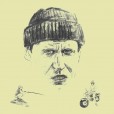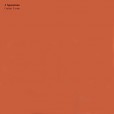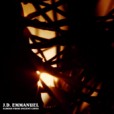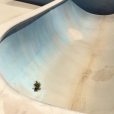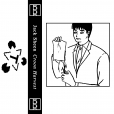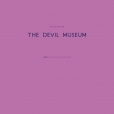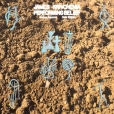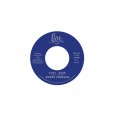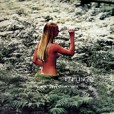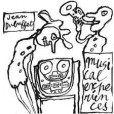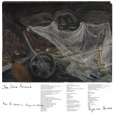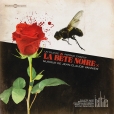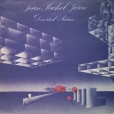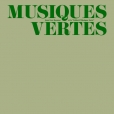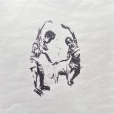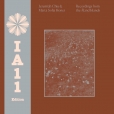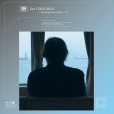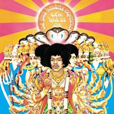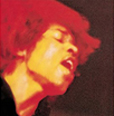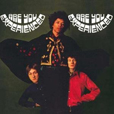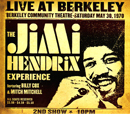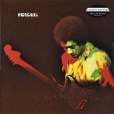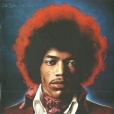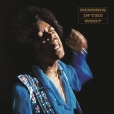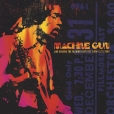Your basket is empty

‘J Spaceman recorded this strange record at his own Amazing Grace Studio in June 2005.
It’s hard to describe, but it contains elements of systems musics, with gamelan-like overtones. A perfect companion piece to the new Spiritualized LP.’
Ravishing jazz and electronics from the same stumbling, giddy reaches as La Monte Young and Terry Riley, recorded in Texas in 1981 on multi-tracked organ and synths (with tape loops of birds and wind-chimes), and acoustic guitar.
‘My music is designed to enhance deep meditative, or altered states, to allow the listener to personally connect to the Creator of All that exists in the Universe. My music style is to first create a foundation using cyclic, polyrhythmic music, then build several layers of improvised leads and rhythms that allows you to transcend time and space… We have Memories of Past Lives that reverberate in our hearts like Echoes From Ancient Caves.’
The Observer raved about a recent performance of this at the Wigmore Hall: ‘Solo for Cello (and fixed audio) was the highlight, an extensive, ghostly work played by Apartment House’s indefatigable artistic director, Anton Lukoszevieze. Imagine a baroque dance suite — with the familiar figurations of arpeggios, quick finger work and string crossing — played muted and whispered a few galaxies away, and you get the idea.’
The performer of this recording, Anton himself has written that Solo is ‘an extended exploration of the resonant body of the cello, but also a kind of flickering, glitchy and incessant ‘moto perpetuo’ of extreme intensity and a delicate beauty. The cello has a particular scordatura tuning, which creates an enigmatic harmonic ‘space’ to its sounding throughout the work. As the cellist constantly bows the heavily muted cello with varied arpeggiated freneticism, the instrument emits a particular halo of harmonic resonances creating a spectral and ghostly effect, deceptive and illusory. The work gradually morphs into different sections, each with their own particular motivic identity, at times accompanied by an audio playback of various densities. The latter sections of the work have a baroque-like lightness and ornamental quality, but do not allay the dramatic incisiveness of the the work, which ends with a final enigmatic spasm of sounds.’
And the composer Sheen advised the mastering engineer that ‘the cello is muted with a very heavy metal mute which thins out the sound massively, and Anton plays a super-light bow with extreme flautando, which creates a strange thin wispy sound. I’d like it to sound as distant and liminal as possible, with a lot of bow sound and strange resonances from the harmonics of the cello. With the exception of a few obvious spots where it gets louder and fuller, there should be as little ‘core’ to the sound as possible, but as many strange resonances as possible. The words we used a lot of in rehearsals were ‘baroque’ and ‘internal’ and ‘light’. I hope this helps.’
Transfixing, and good for ears; with luminous strands of Marin Marais, Derek Bailey, and Eliane Radigue.
Check it out!
Grieving, hushed, involving music for voices, field recordings, and white noise, performed by Kantos.
An oneiric, melancholic cross between ambient, soundtrack, and audio drama, conjured from recordings made in the middle of a forest in Lithuania, near the Devil Museum in Kaunas.
‘I listened to the door hinge and I recorded the river, with its small islands of ice brushing up against the banks like a pulse.’
Thrilling, intensely rhythmic, questing music, featuring brilliant, dynamic contributions by Joshua Abrams and Sam Wilkes.
Very warmly recommended. Check out Bracelets For Unicorns.
‘The core of the album is a lush, opulent matrix of percussion ranging from the familiar — hand claps and drum machines — to the mysteriously verdant, sampled largely from Krivchenia’s own performed field recorded collection. For years, he would record any and all of his musical encounters with natural objects: performing on a particularly resonant log on a hike, throwing rocks into a pristine pond, tap dancing in the mud. Not just a novel set of sounds, but a new rhythmic language. The particular give, the anticipatory rustle, the extra breath of a hollow log when functioning as a kickdrum provides a greenness that overtakes the rhythmic grid, giving this music a peculiar kind of stickiness.’
An anti-war garage-punk onslaught from 1966, doing Bo Diddley proud.
Backed here by The Leaves (plus drummer Don Conka from Love), BJ knocked around with everyone from the Rolling Stones to Frank Zappa.
Anyway… they brought it to Jerome.
The legendary Library album by Sandro Brugnolini and Stefano Torossi, undercover in 1975 for contractual reasons.
Bad-ass headz vibes — madly sampledelic, super-funky, jazzy and widescreen — with the genies of Herbie, Barry White, Isaac Hayes and the Mizells, all in the mix.
‘A kind of musical road movie, shifting gears through time, space, and reverie, with an itinerary and cast of characters looming in and out of focus. Post-punk chanson with an ear for micro-tonality. The balance of mutant music-boxes and dewy miniatures recalls otherworldly hits from Gareth Williams’ Flaming Tunes, The Residents, and the catchier corners of the Lovely Music catalogue.’
Two fabled, previously unreleased soundtracks — hallucinogenic orchestral music for Patrick Chaput, and a waltzing, rhythmic onslaught for Robert Benayoun — complete with an extensive booklet of essays, interviews, secrets and rare images from both films.
Recorded by Jean Michel Jarre in 1972, during his work experience at G.R.M. (Groupe de Recherches Musicales), for a commission to provide sound for public spaces like airports and libraries. Fifteen tracks made with only two synthesizers (EMS VCS3 & Farfisa organ) in an experimental and very minimal style.
‘It was a crazy album, totally homemade, with rhythms that I made in my student room, with a minimum of equipment and at the same time electronic sounds that I stole from the GRM where I went at night after stealing the keys to the studios. It is a pirate record, in every sense of the word, in which we find what I did afterwards.’
‘The Musiques Vertes project began in south east France during the late 1970s, spearheaded by Christine Armengaud, who was investigating a long tradition of musical instruments made with organic materials and plants. With the help of elderly people in the region, she was able to construct 240 instruments, long used for bird calling, dancing, as the toys of young shepherds and children, and much more, but which had been lost to common usage following the First World War.
‘In 1980 Jean-Yves Bosseur initiated a programme of collective music-making using the instruments reconstructed by Armengaud. Rather than working with professional musicians, he preferred locals and children he encountered in Aix-en-Provence between 1981 and 1982. Recorded by the legendary French ornithologist and wildlife field recordist Jean-Claude Roché, the Musiques Vertes album presents eleven musical excursions, utilising a series of instructions or games set up by the composer to encourage collective musical exchange, as well as a dialogic exchange between this practice and active listening within a natural environment.
‘Bubbling textures and atonalities, blended with sounds from the natural environment, intermingle with staggering birdsong-alike tonalities and rattling percussive passages, producing striking moments of abstraction that retain a remarkable sense of humanity and ease. A document of pure sonic magic and stunningly organic creativity.’
‘A wobbly loop of found sound. Almost inaudible speech from an unidentified documentary. Lapping waves of folk guitar created at the edges of the player’s ability. A haunted melodica. Mumbled vocals that reinvent the singer’s uncertainties as a deliciously glum pose. Layer these up in the recording software of your choice. Labour in a back bedroom overlooking the railway line to summon ghosts.
‘Spirits arrive from West Yorkshire, from Glasgow and Dunedin, from the suburban Midwest. Rising from squats and university accommodation past, from damp rooms filled with old paperbacks, stale hash smoke and abandoned mugs of tea.
‘Even as you listen to this collection of home recordings, made over the last few years by South London duo Jemima, these ghosts crowd around. Born in the Seventies to chase the tape experiments and gentle strumming of the Sixties they crane their necks and edge closer to the laptop. When something this perfect comes along, even the most tranquillised must stir their stumps.
‘It’s lonely music created around a wine bottle with a candle in it, made too late to appear via Xpressway or Cordelia. Don’t imagine though, that it has no home in the now. These spectres remain close because they know they are still wanted. We need them as much as they need us.
‘This spell-binding LP is a window onto a half-lit world on a deeper plane of consciousness.’
Jeremiah Chiu, Marta Sofia Honer
Recordings from the Aland Islands
International Anthem Recording Co.
Intensely evocative, meditative duets by modular synthesizer and viola, interwoven with field recordings — birds, the sound of forests — encapsulating sojourns on the Åland archipelago in the Baltic Sea, between Sweden and Finland.
